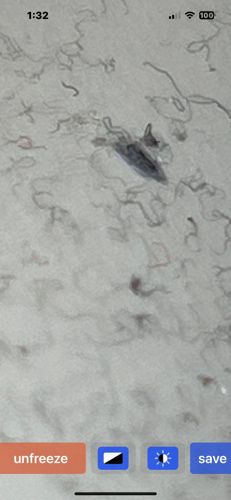Head Louse
Scientific Name: Pediculus humanus capitis
Order & Family: Phthiraptera; Pediculidae
Size: 2-3 mm (adults)

Natural Habitat
Exclusively on the human scalp and hair.
Diet & Feeding
Human blood
Behavior Patterns
Head lice spend their entire life cycle on the human scalp, feeding on blood multiple times a day. They cannot jump or fly, but crawl from head to head, typically through direct head-to-head contact. Nits (eggs) are laid and cemented to hair shafts close to the scalp. After hatching, nymphs mature into adults in about a week. Adults live for about 30 days and continually lay eggs. Infestations lead to itching, which is the body's allergic reaction to the louse saliva.
Risks & Benefits
Potential risks include intense itching, discomfort, and secondary bacterial infections due to scratching. Head lice do not transmit diseases to humans. There are no known benefits.
Identified on: 8/29/2025